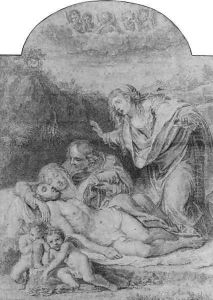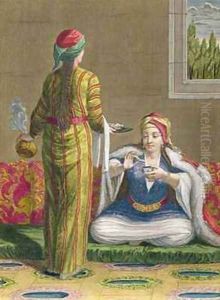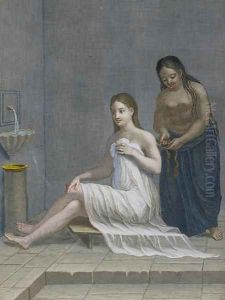Jean-Baptiste Haussard Paintings
Jean-Baptiste Haussard was a French artist, primarily known for his work as an engraver. Born in 1688, Haussard's career unfolded in the context of the Régence period and the early reign of Louis XV, a time marked by significant artistic change and development in France. Although there is limited information about his personal life, Haussard's contributions to the world of French art during the 18th century were noteworthy.
Jean-Baptiste Haussard is often remembered for his detailed engravings, which include reproductions of paintings and decorative works. His engravings served as a means of disseminating the popular artistic styles of the period and were particularly important in an era before the advent of photographic reproduction. Through his engravings, a wider audience could access the works of contemporary painters and decorators, contributing to the spread of artistic movements and tastes.
Haussard's works are characterized by a delicate and precise style, capturing the elegance and sophistication of the Rococo movement, which was dominant at the time. The Rococo style, known for its elaborate ornamentation, pastel colors, and playful themes, is reflected in the subjects Haussard chose to engrave. He often depicted scenes of leisure and romance, aligning with the tastes of the French aristocracy of his day.
Despite his skill and the quality of his work, Jean-Baptiste Haussard remains a relatively obscure figure in art history. This obscurity may be due in part to the fact that engravers, unlike painters or sculptors, often worked in the background, reproducing the works of others rather than creating their own original compositions. Nevertheless, Haussard's engravings are valuable historical records of the artistic output of his time.
Jean-Baptiste Haussard's death occurred in 1749, but the exact circumstances of his later life and death are not well-documented. His engravings, however, continue to be studied by art historians and print collectors, who recognize the skill and artistry involved in his craft. His work provides insight into the visual culture of 18th-century France and remains a testament to the intricate and labor-intensive process of engraving that was an essential part of the art world before the modern era.


